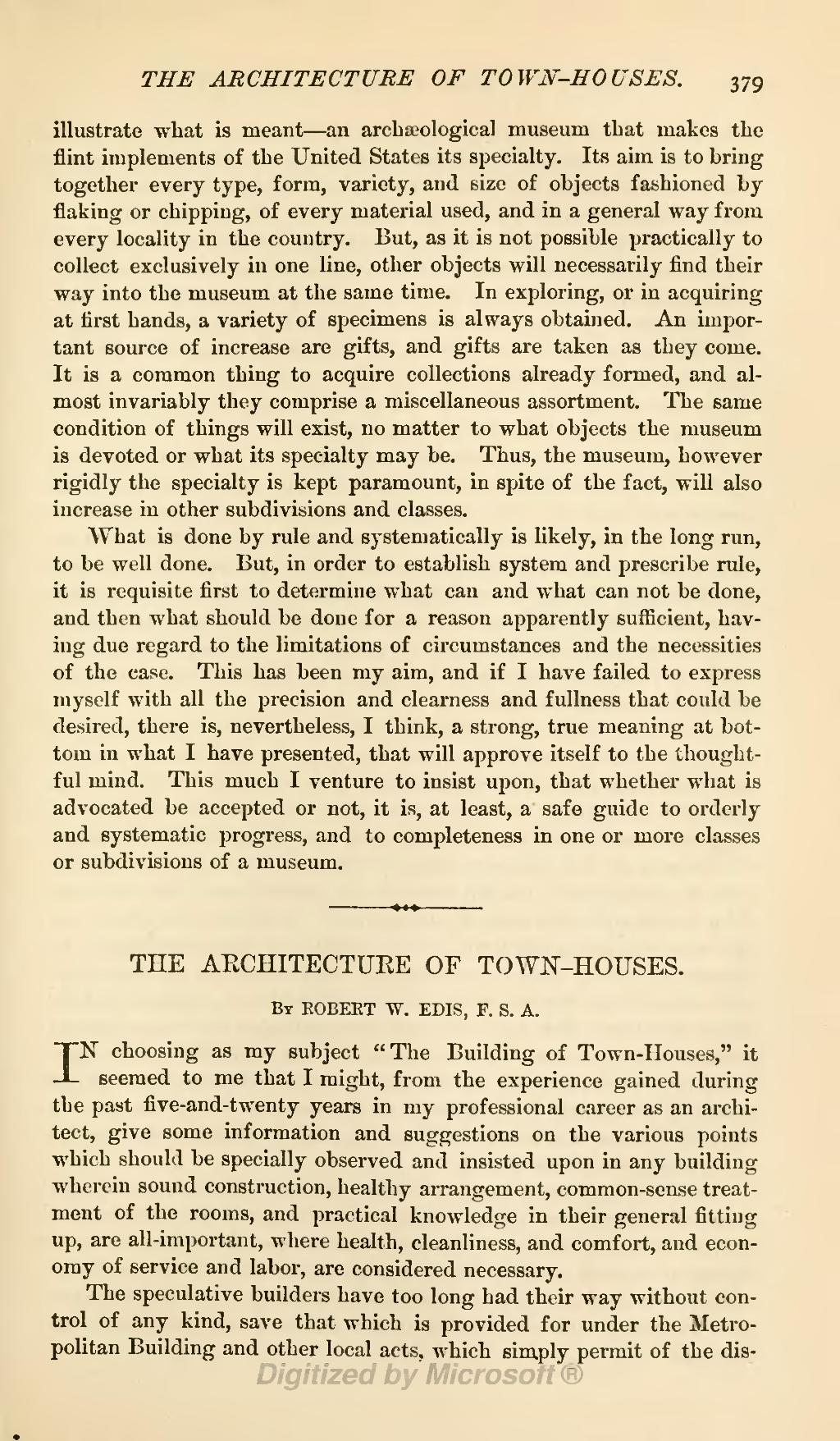illustrate what is meant—an archæological museum that makes the flint implements of the United States its specialty. Its aim is to bring together every type, form, variety, and size of objects fashioned by flaking or chipping, of every material used, and in a general way from every locality in the country. But, as it is not possible practically to collect exclusively in one line, other objects will necessarily find their way into the museum at the same time. In exploring, or in acquiring at first hands, a variety of specimens is always obtained. An important source of increase are gifts, and gifts are taken as they come. It is a common thing to acquire collections already formed, and almost invariably they comprise a miscellaneous assortment. The same condition of things will exist, no matter to what objects the museum is devoted or what its specialty may be. Thus, the museum, however rigidly the specialty is kept paramount, in spite of the fact, will also increase in other subdivisions and classes.
What is done by rule and systematically is likely, in the long run, to be well done. But, in order to establish system and prescribe rule, it is requisite first to determine what can and what can not be done, and then what should be done for a reason apparently sufficient, having due regard to the limitations of circumstances and the necessities of the case. This has been my aim, and if I have failed to express myself with all the precision and clearness and fullness that could be desired, there is, nevertheless, I think, a strong, true meaning at bottom in what I have presented, that will approve itself to the thoughtful mind. This much I venture to insist upon, that whether what is advocated be accepted or not, it is, at least, a safe guide to orderly and systematic progress, and to completeness in one or more classes or subdivisions of a museum.
| THE ARCHITECTURE OF TOWN-HOUSES. |
By ROBERT W. EDIS, F. S. A.
IN choosing as my subject "The Building of Town-Houses," it seemed to me that I might, from the experience gained during the past five-and-twenty years in my professional career as an architect, give some information and suggestions on the various points which should be specially observed and insisted upon in any building wherein sound construction, healthy arrangement, common-sense treatment of the rooms, and practical knowledge in their general fitting up, are all-important, where health, cleanliness, and comfort, and economy of service and labor, are considered necessary.
The speculative builders have too long had their way without control of any kind, save that which is provided for under the Metropolitan Building and other local acts, which simply permit of the dis-
